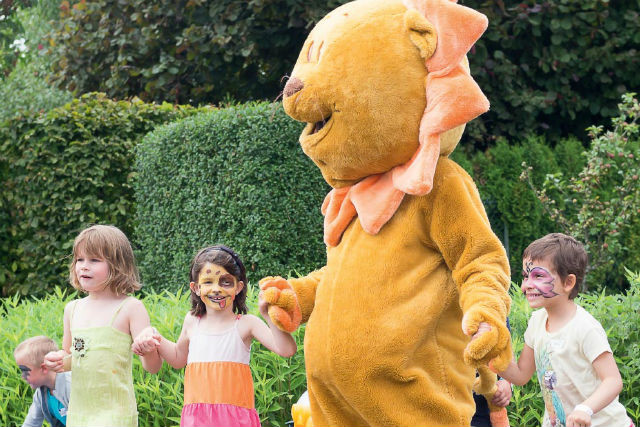Jess Bauldry: Tell us a bit about Fondatioun Kriibskrank Kanner?
Anne Goeres: The association was founded almost 28 years ago by a doctor and some friends. The idea was to help children and youngsters as soon as they have cancer.
It was always the same goal: helping them from the day of the diagnosis on until their total remission or if the child dies, to accompany the family further.
How many young people in Luxembourg are affected by cancer each year and how does this compare on a European level?
In 2016, we helped 185 families. Of that number, 81% were cases of cancer (149 children aged from 0 to 18) and 19% were rare diseases (36 children aged from 2 months to 17).
Unfortunately, we also had six deaths last year. This number, as it is very low and still far too high, can really vary from one year to the next and jump from single to double digits. The year before there were 12 deaths. It’s very difficult to give an average, we try to avoid it but it gives a bit of context. On a European level there are 35,000 new cases of cancer in young people diagnosed each year. One in every 300 newborns develop cancer before turning 20. Another fact that is pretty scary is that around 20 children and adolescents die of cancer every day in Europe. It makes 6,000 per year.
80% of young people with cancer are disease free after five years. It’s still not enough but there has been progress because 50 years ago almost all died.
What are the biggest challenges facing young people and their families following a cancer diagnosis?
From what we heard from doctors and the families, it’s a huge shock and as soon as they have a diagnosis around cancer, often they don’t hear what you said afterwards.
Today cancer is still very close to the notion of death. It’s very seldom that a child has cancer and because it is seldom, it’s difficult to understand and believe it.
And another thing because we’ve a very small country, almost 100% of cases are sent to university hospitals abroad, which creates challenges for the family. They are torn apart as one parent joins the child and the other parents has to look after the other children. It’s difficult to organise logistically, to be ready to go to a foreign country where they don’t know anyone.
Children with cancer are currently sent to specialist hospitals in Brussels, where you have a parents’ house, Homburg, Paris or Nancy. Why can’t they be treated in Luxembourg?
The Kannerklinik here does not yet offer a national oncological paediatric service at the moment. But they have just announced a job offer for a paediatric oncological specialist. Hopefully from January onwards, we will be stronger in Luxembourg. For the moment, they can do diagnosis and testing. A lot of surgical interventions are done here for example some kinds of brain tumours or biopsies are almost all done here in Luxembourg.
Currently, when the child is diagnosed here they are then sent to a university hospital abroad. A first major treatment is done. When you have a cancer treatment, or chemo or radiotherapy or a combination, the body needs a rest so there will be breaks in the treatment. During the breaks, the children are often allowed to go back home. But there are certain signs the parents have to be alert for, for example if the child has a fever. The team here needs to know what to do. It means more things will be able to be done here. Maybe one day we will be able to have a whole ward here.
Tell us about the “Letz Go Gold” campaign.
It’s a worldwide movement, which we started in Luxembourg in 2015 when we distributed postcards and invited the public to write a message to families going through cancer.
It was positively surprising--we got back almost 1,600 cards. We made a book out of them. In 2016, we started to ask the companies to light up their buildings in gold, because gold is the colour of the ribbon for children’s cancer.
Laure Omont (campaign coordinator): This year we will continue with the actions we started last year, for example with the illumination of company buildings. We will distribute gold ribbon pins again, which is the international symbol for childhood cancer. We designed a bracelet so everyone can choose their preferred way to show their support. It and the ribbons will be available for free in many shops. Our sponsors for the campaign will take care of the expense.
We will also organise two big events:
a flash mob on Place Guillaume II at 3:30pm on 16 September. We’ve a dance that can be viewed on YouTube and Facebook which people can learn;
a closing concert at 6:30pm on 30 September at the kiosk in Place d’Armes. The goal of the closing concert is to welcome families, volunteers and everyone involved around the kiosk which will be decked out in gold ribbons in a symbolic support of children with cancer. People are encouraged to show their support by posing on social media using the hashtag #letzgogold.
